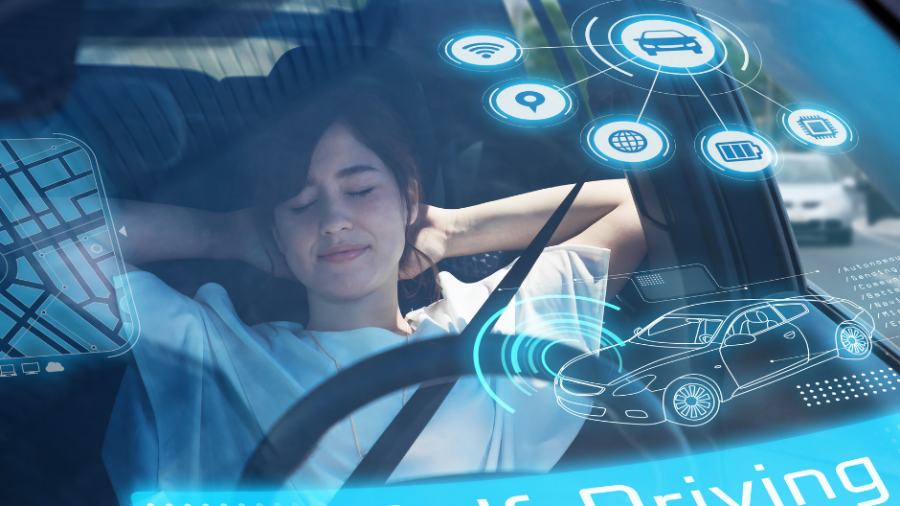We often hear driverless cars are the future of transport. But who will own them? There are three possibilities. You could subscribe to a driverless car for as long as you like. You could pay per use, like taking a taxi. Or it could be all yours. But do you want to own a driverless car?
Who will own driverless cars?
While the hype has subsided somewhat, auto and tech companies are investing in autonomous vehicles. They do not seem 100% confident these vehicles will be on the roads soon, but they don’t want other companies to succeed first and lead the market.
Of course, traditional companies, like GM, want to keep selling their products. Most Australians seem to want to keep owning cars, even though they sit idle 95% of the time. There are signs Millennials and other urban dwellers are more open to sharing cars than owning them. But even this choice tends to change when they have families.
A service model, based on owning fleets of driverless cars, is a different type of business from selling products. It’s also different for consumers. If driverless cars are going to work as a service, it needs to offer at least the same benefits as ownership:
- Widely available – in cities, regional towns and beyond
- Competitively priced – compared to other kinds of transport
- Flexible – for different kinds of trip
- Privacy – crucial for personal transport
- Safety – particularly post Covid.
There are two types of service model: subscriptions or pay per use.
Would you subscribe to a driverless car?
A subscription model means you pay to use the car as a service rather than owning it.
Subscriptions are already working in the conventional car world. There are half a dozen car subscription services in Australia: Blinker, Carbar, Carly, FlexiGo, GoGet and HelloCars. A subscription costs $100 to $400 a week, depending on the service and vehicle. Even though this includes all on-road costs, that is still $5,200 to $20,800 for one year’s use.
There are good reasons to subscribe:
- No long-term commitment to any particular car
- Insurance, registration, maintenance and roadside assistance all included
- You can swap the vehicle for another more suitable one at short notice.
Currently, any form of shared transport is considered less safe than private transport. Nobody knows whether this will have a lasting impact on people’s preferences and patterns for travel.
Would you pay to use a driverless car?
A pay per use model means you use a driverless car like a taxi service, often called RoboTaxis. Plans for introducing Robotaxis are mixed:
- Waymo in Phoenix, or Didi and AutoX in Shanghai already operate fleets of autonomous cabs
- Uber sold off its self-driving taxi division in late 2020 for half its 2019 value
- Ford postponed the launch of an autonomous taxi service until 2022 because it wants to research changes in customer behaviour during the pandemic
- Volkswagen imagines they could “switch on” or “turn off” autonomous driving for an hourly rate.
The impact of the pandemic has created challenges to the case for shared use. Carmakers offering this model will have to find a way to make shared vehicles feel safer. Meanwhile, this makes the case for future ownership stronger.
Do you want to own a driverless vehicle?
Ownership is the usual model so a driverless car is just another saleable product. GM aims to sell autonomous vehicles directly to the public by 2030. But who will be able to afford them?
Some of the components of driverless cars are becoming cheaper. For example, LiDAR sensors, which were $75,000 in 2015 are now $100. But these vehicles would still cost hundreds of thousands of dollars, a lot more than the average family car in Australia.
Who would own driverless cars?
- Fleet companies
- Carmakers
- Tech companies
- Wealthy people.
However, could people who are not wealthy potentially benefit from owning a driverless car? When not using it themselves, they could do what companies will do – sell their vehicle as a service. This would be similar to the way owners can rent out their cars with Car Next Door or DriveMyCar.
How do we insure driverless cars?
There is a long way to go before insurance can deal with vehicles with no driver.
How we insure a driverless car depends on who owns it. If only fleet companies or carmakers own self-driving cars then they may provide their own insurance. If self-driving cars turn out to be safer than those driven by humans, humans could be discouraged from driving any kind of car. All insurance cover would be for the vehicle itself.
Do we want to own driverless cars? Some say people don’t want to replace their cherished car with an app. Yet people who use Uber or CarNextDoor already have.
Driverless cars are still a long way off. Until then, you are very much in charge and your car is still something you must drive and insure. Find the cheapest greenslip here.


your opinion matters: